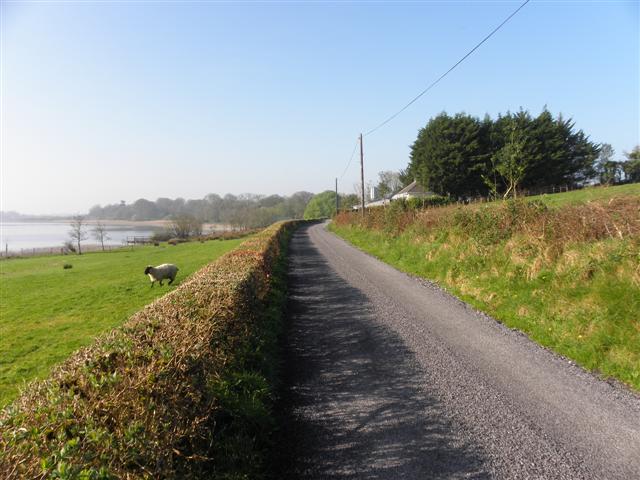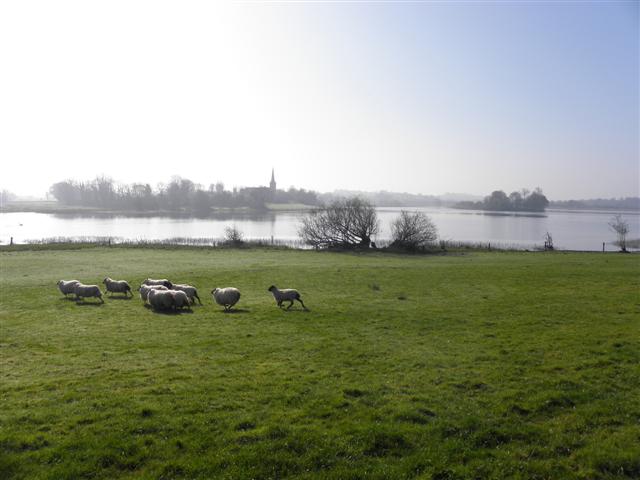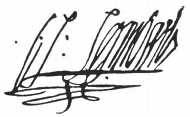|
Port, Templeport
Port () is a townland in the civil parish of Templeport, County Cavan, Ireland. It lies in the Roman Catholic parish of Templeport and barony of Tullyhaw. Geography Port is bounded on the north by Muinaghan townland, on the west by Kildoagh and Corboy Glebe townlands, on the south by Ray, Templeport and Cloneary townlands and on the east by Cor, Templeport and Kilsallagh townlands. Its chief geographical features are Templeport Lough, Inch Island, woods, streams and spring wells. Port is traversed by minor public roads and rural lanes. The townland covers 335 statute acres. Etymology The old name of the townland was Templeport (now shortened to Port) which is the anglicisation of the Gaelic ''Teampall An Phoirt'' ("The Church of the Port or Bank or Landing-Place"). The church referred to is the old church on St. Mogue's Island in the middle of Port Lake. This church fell into disuse in medieval times and a new church was built on the opposite shore of the lake. It was forf ... [...More Info...] [...Related Items...] OR: [Wikipedia] [Google] [Baidu] |
Templeport
Templeport () is a civil parish in the barony of Tullyhaw, County Cavan, Ireland. The chief towns in the parish are Bawnboy and Ballymagauran. The large Roman Catholic parish of Templeport containing 42,172 statute acres was split up in the 18th & 19th centuries into three new parishes, Templeport, Corlough and Glangevlin. Etymology The name of Templeport parish derives from the old townland of Templeport (which is now shortened to Port) which is the anglicisation of the Gaelic 'Teampall An Phoirt' ("The Church of the Port or Bank or Landing-Place"). The church referred to is the old church on St. Mogue's Island in the middle of Port Lake. This church fell into disuse in medieval times and a new church was built on the opposite shore of the lake. It was forfeited to Queen Elizabeth in 1590 and started use as a Protestant church in about 1610. It is very unlikely that the island church ever served as the parish church because there was only one boat available and it would have ... [...More Info...] [...Related Items...] OR: [Wikipedia] [Google] [Baidu] |
Bishop Of Kilmore
The Bishop of Kilmore is an episcopal title which takes its name after the parish of Kilmore, County Cavan in Ireland. In the Roman Catholic Church it remains a separate title, but in the Church of Ireland it has been united with other bishoprics. History The see of Kilmore was originally known as Breifne (Latin: ''Tirbrunensis'', ''Tybruinensis'' or ''Triburnia''; Irish: ''Tír mBriúin'', meaning "the land of the descendants of Brian", one of the kings of Connaught) and took its name after the Kingdom of Breifne., ''Handbook of British Chronology'', p. 362. The see became one of the dioceses approved by Giovanni Cardinal Paparoni at the synod of Kells in 1152, and has approximately the same boundaries as those of the ancient Kingdom of Breifne. In the Irish annals, the bishops were recorded of ''Breifne'', ''Breifni'', ''Breifny'', ''Tir-Briuin'', or ''Ui-Briuin-Breifne''. In the second half of the 12th century, it is likely the sees of Breifne and Kells were ruled tog ... [...More Info...] [...Related Items...] OR: [Wikipedia] [Google] [Baidu] |
William Bedell
The Rt. Rev. William Bedell, D.D. ( ga, Uilliam Beidil; 15717 February 1642), was an Anglican churchman who served as Lord Bishop of Kilmore, as well as Provost of Trinity College Dublin. Early life He was born at Black Notley in Essex, and educated at Emmanuel College, Cambridge, where he was a pupil of William Perkins. He became a fellow of Emmanuel in 1593, and took orders. In 1607 he was appointed chaplain to Sir Henry Wotton, then English ambassador at Venice, where he remained for four years, acquiring a great reputation as a scholar and theologian. He translated the ''Book of Common Prayer'' into Italian, and was on terms of close friendship with the reformer, Paolo Sarpi. He wrote a series of sermons with Fulgenzio Micanzio, Sarpi's disciple. In 1616 he was appointed to the rectory of Horningsheath (near Bury St Edmunds, where he had previously worked), which he held for twelve years. Ireland In 1627, he became Provost of Trinity College Dublin, despite having no ... [...More Info...] [...Related Items...] OR: [Wikipedia] [Google] [Baidu] |
County Westmeath
"Noble above nobility" , image_map = Island of Ireland location map Westmeath.svg , subdivision_type = Sovereign state, Country , subdivision_name = Republic of Ireland, Ireland , subdivision_type1 = Provinces of Ireland, Province , subdivision_name1 = , subdivision_type2 = Regions of Ireland, Region , subdivision_name2 = Eastern and Midland Region, Eastern and Midland , seat_type = County town , seat = Mullingar , parts_type = Largest settlement , parts = Athlone , leader_title = Local government in the Republic of Ireland, Local authority , leader_name = Westmeath County Council , leader_title2 = Dáil constituencies , leader_name2 = , leader_title3 = European Parliament constituencies in the Republic of Ireland, EP constituency , leader_name3 = Midlands–North-West (European Parliament constituenc ... [...More Info...] [...Related Items...] OR: [Wikipedia] [Google] [Baidu] |
Kilbeggan
Kilbeggan () is a town in the barony of Moycashel, County Westmeath, Ireland. Geography Kilbeggan is situated on the River Brosna, in the south of County Westmeath. It lies south of Lough Ennell, and Castletown Geoghegan, north of the boundary with County Offaly, about 9 kilometres north of Tullamore. Kilbeggan is surrounded by the gently rolling Esker Riada, the linear sand hills that stretch across the Irish midlands, which were left by retreating glaciers at the end of the last ice age. It is famous as the location of the oldest recorded incidence of a tornado in Europe. Kilbeggan comprises 29 townlands: Aghamore, Aghuldred, Ardnaglew, Ballinderry Big, Ballinderry Little, Ballinwire, Ballymacmorris, Ballynasudder, Ballyoban, Brownscurragh, Camagh, Clonaglin, Coola, Demesne or Mearsparkfarm, Grange and Kiltober, Grangegibbon, Greenan, Guigginstown, Hallsfarm, Kilbeggan, Kilbeggan North, Kilbeggan South, Kiltober / Kiltubber and Grange, Loughanagore, Meadowpark, Meeldrum, Mee ... [...More Info...] [...Related Items...] OR: [Wikipedia] [Google] [Baidu] |
Oliver Lambart, 1st Lord Lambart, Baron Of Cavan
Oliver Lambart, 1st Lord Lambart, Baron of Cavan (died June 1618) was a military commander and an MP in the Irish House of Commons. He was Governor of Connaught in 1601. He was invested as a Privy Counsellor (Ireland) in 1603. He was also an English MP, for Southampton 1597. He is buried in Westminster Abbey. Biography Military Fighting the Spanish, Lambert took part in the Dutch campaign under his commander Francis Vere: he was wounded in the assault on Steenwijk which led to its capture in 1592. On 20 June 1596, Essex and Effingham sacked the harbour of Cádiz. The Spanish scuttled their Indies fleet including a cargo of 12 million ducats. The force occupied the city until 5 July. Lambart was knighted for his part in the looting. During the Nine Years' War (1594–1603) Lambart served in Essex's Irish campaign of 1599. He commanded the 200 Foot at Enniscorthy, County Wexford. On 6 January 1615, he retook Dunyvaig Castle, Islay, with the assistance of Sir John Campbell o ... [...More Info...] [...Related Items...] OR: [Wikipedia] [Google] [Baidu] |
Bishop Of Kilmore And Ardagh
The Bishop of Kilmore and Ardagh was the Ordinary of the Church of Ireland diocese of Kilmore and Ardagh in the Province of Armagh. The Diocese of Kilmore composed most of County Cavan and parts of counties Leitrim, Fermanagh, Meath and Sligo. The Diocese of Ardagh comprised most of County Longford and parts of counties Cavan and Roscommon. The Episcopal see An episcopal see is, in a practical use of the phrase, the area of a bishop's ecclesiastical jurisdiction. Phrases concerning actions occurring within or outside an episcopal see are indicative of the geographical significance of the term, mak ...s of Kilmore and Ardagh were intermittently combined in the 17th and 18th centuries until they were finally united in 1839. They were combined further with Elphin in 1841 to form the united bishopric of Kilmore, Elphin and Ardagh. List of Bishops of Kilmore and Ardagh References Bibliography * {{DEFAULTSORT:Bishop of Kilmore and Ardagh Kilmore and Ardagh Bis ... [...More Info...] [...Related Items...] OR: [Wikipedia] [Google] [Baidu] |
County Meath
County Meath (; gle, Contae na Mí or simply ) is a county in the Eastern and Midland Region of Ireland, within the province of Leinster. It is bordered by Dublin to the southeast, Louth to the northeast, Kildare to the south, Offaly to the southwest, Westmeath to the west, Cavan to the northwest, and Monaghan to the north. To the east, Meath also borders the Irish Sea along a narrow strip between the rivers Boyne and Delvin, giving it the second shortest coastline of any county. Meath County Council is the local authority for the county. Meath is the 14th-largest of Ireland's 32 traditional counties by land area, and the 8th-most populous, with a total population of 220,296 according to the 2022 census. The county town and largest settlement in Meath is Navan, located in the centre of the county along the River Boyne. Other towns in the county include Trim, Kells, Laytown, Ashbourne, Dunboyne, Slane and Bettystown. Colloquially known as "The Royal County", the historic ... [...More Info...] [...Related Items...] OR: [Wikipedia] [Google] [Baidu] |
Abbey Of Kells
The Abbey of Kells (''Mainistir Cheanannais'' in Irish) is a former monastery in Kells, County Meath, Ireland, north of Dublin. It was founded in the early 9th century, and the Book of Kells was kept there during the later medieval and early modern periods before finally leaving the abbey in the 1650s. Much of the Book of Kells may have been created there, but historians cannot be certain of the exact date and circumstances of its creation. History The Abbey of Kells was reportedly founded by St. Columba ca. 554, after High King Diarmuid Mac Caroll of Tara granted the land. The Abbey was refounded from Iona, the building taking from 807 until the consecration of the church in 814. The site was a former Irish hill fort. In 814, Cellach, Abbot of Iona, retired to Kells, but, contrary to what is sometimes claimed, it is clear from the ''Annals'' that Iona remained the main Columban house for several decades, despite the danger of Viking raids. Only in 878 were the main reli ... [...More Info...] [...Related Items...] OR: [Wikipedia] [Google] [Baidu] |
John Davies (poet, Born 1569)
Sir John Davies (16 April 1569 (baptised)8 December 1626) was an English poet, lawyer, and politician who sat in the House of Commons at various times between 1597 and 1621. He became Attorney General for Ireland and formulated many of the legal principles that underpinned the British Empire. Early life Davies was born in Wiltshire, possibly at Chicksgrove Manor at Lower Chicksgrove, to John and Mary Davies. He was educated at Winchester College for four years, a period in which he showed much interest in literature. He studied there until the age of sixteen and went to further his education at the Queen's College, Oxford, where he stayed for just eighteen months, with most historians questioning whether he received a degree. Davies spent some time at New Inn after his departure from Oxford, and it was at this point that he decided to pursue a career in law. In 1588 he enrolled in the Middle Temple, where he did well academically, although suffering constant reprimands for his ... [...More Info...] [...Related Items...] OR: [Wikipedia] [Google] [Baidu] |
County Louth
County Louth ( ; ga, An Lú) is a coastal county in the Eastern and Midland Region of Ireland, within the province of Leinster. Louth is bordered by the counties of Meath to the south, Monaghan to the west, Armagh to the north and Down to the north-east, across Carlingford Lough. It is the smallest county in Ireland by land area and the 17th most populous, with just over 139,100 residents as of 2022. The county is named after the village of Louth. Louth County Council is the local authority for the county. History County Louth is named after the village of Louth, which in turn is named after Lugh, a god of the ancient Irish. Historically, the placename has had various spellings; , , and (see Historic Names List, for full listing). is the modern simplified spelling. The county is steeped in myth, legend and history, and is a setting in the epic. Later it saw the influence of the Vikings, as seen in the name of Carlingford Lough. They also established a longphort a ... [...More Info...] [...Related Items...] OR: [Wikipedia] [Google] [Baidu] |
Mellifont Abbey
Mellifont Abbey ( ga, An Mhainistir Mhór, literally 'the Big Monastery'), was a Cistercian abbey located close to Drogheda in County Louth, Ireland. It was the first abbey of the order to be built in Ireland. In 1152, it hosted the Synod of Kells-Mellifont. After its dissolution in 1539, the abbey became a private manor house. This saw the signing of the Treaty of Mellifont in 1603 and served as William of Orange's headquarters in 1690 during the Battle of the Boyne. Today, the ruined abbey is a National monument of Ireland and accessible to the public. The English language name for the monastery, 'Mellifont', comes from the Latin phrase '' Melli-fons'', meaning 'Font of Honey'. Location Mellifont Abbey sits on the banks of the River Mattock, some 10 km (6 miles) north-west of Drogheda. History Origins The abbey was founded in 1142 on the orders of Saint Malachy, Archbishop of Armagh. By 1170, Mellifont had one hundred monks and three hundred lay brothers. The abb ... [...More Info...] [...Related Items...] OR: [Wikipedia] [Google] [Baidu] |







